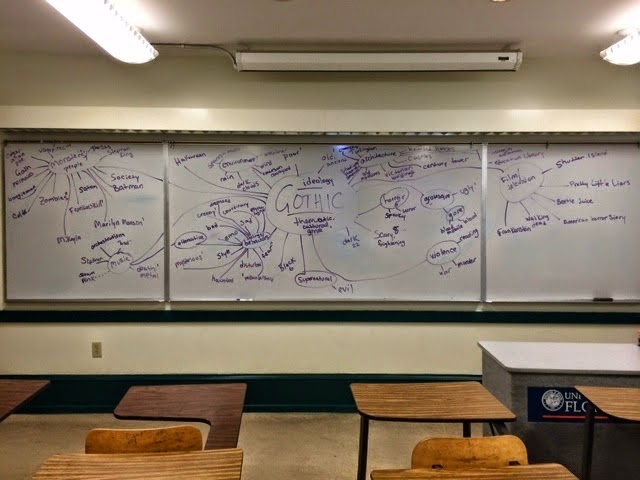The Gothic
Gothic fiction emerged out of Europe in the mid-1700s. Like other literary genres, the Gothic follows a strict, methodological formula which is dependent upon specific tropes and motifs. Typically, Gothic texts display images of horror, contain an atmosphere of terror or suspense, incorporate elements of the supernatural, and physical locations depicting castles and ruins. Oftentimes, Gothic fictions represented the author's fears about sociopolitical changes. For instance, the common Gothic trope of the persecuted female (think Megan Fox in Jennifer's Body) represented a fear of changing women's roles in a sociopolitical context. As women gained liberation, many male authors conveyed their responses by illustrating a woman with agency dying a most gruesome death.
Because the Gothic manifested responses to realities, it now has the ability to represent realistic horror. While Mary Shelley's creature in Frankenstein is not actually alive (or so they say!), the Gothic can literally come to life with the horrors of American history. Take, for instance, American slavery, with its murderous masters, dark bodies swaying from trees, and hapless slave girls chased by tyrannical males. While these realities were depicted in slave narratives, 20th century African American writers used similar tropes to textualize the terror of being Black in America during the Jim Crow era, the Civil Rights movement, and post-Civil Rights.
So, where else can Gothic realities be represented? In the introduction to Gothic in Contemporary Popular Culture, Catherine Spooner suggests "Gothic has always, of course, been associated with the popular" (1). In other words, the Gothic has, since its birth, been represented to audiences with images of the spectacular or the fantastic. For example, Dracula, one of the earliest Gothic images, has been consumed by audiences with a twist of pleasure and horror at the sight of a vampire disguised as a dark and mysterious businessman. Still, even contemporary American popular culture can be traced to images of the Gothic. Spooner correlates Gothic representations with contemporary pop culture -- from "haute couture fashion shows and shoot-'em-up computer games" (2).
If the Gothic can be represented in popular culture, it is important to ask several questions regarding the genre:
1. What is "the Gothic?"
2. How and in what ways is the Gothic represented?
3. How and in what ways is the Gothic consumed?
4. Why are Gothic representations consumed in such a manner?
As such, by the end of this semester, the goal is to come to an answer to each one of these questions. Above all else, thinking critically about Gothic representations in popular culture requires acute attention to rhetoric. In other words, who/what are these tyrants, devils, villains, madwomen, ghosts, zombies, and angels supposed to represent, and why are we so afraid of them?
Further reading:
What is Gothic?
Elements of the Gothic Novel
Romantic Period: Gothic Overview
Gothic Tropes
Subscribe to:
Posts (Atom)
